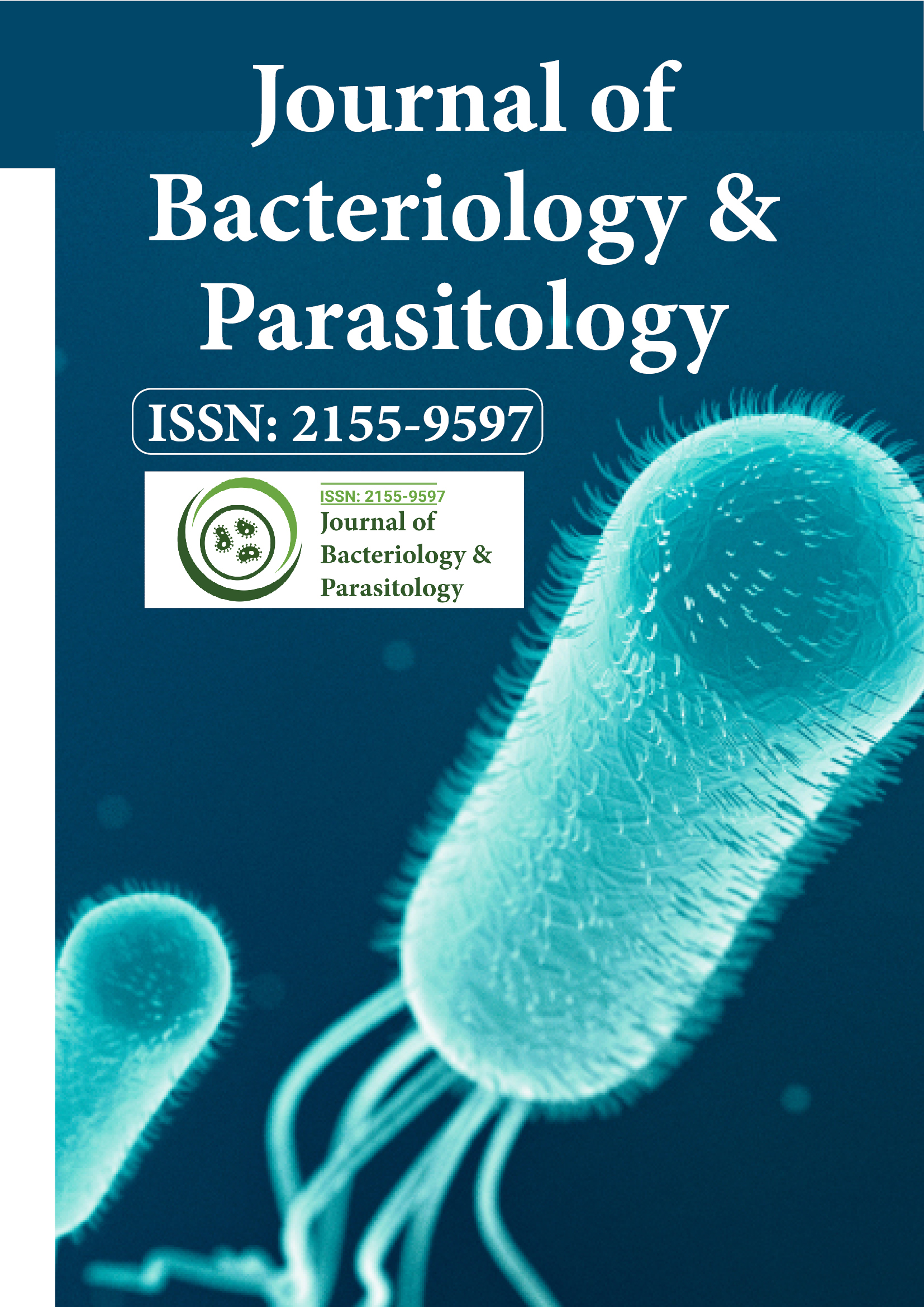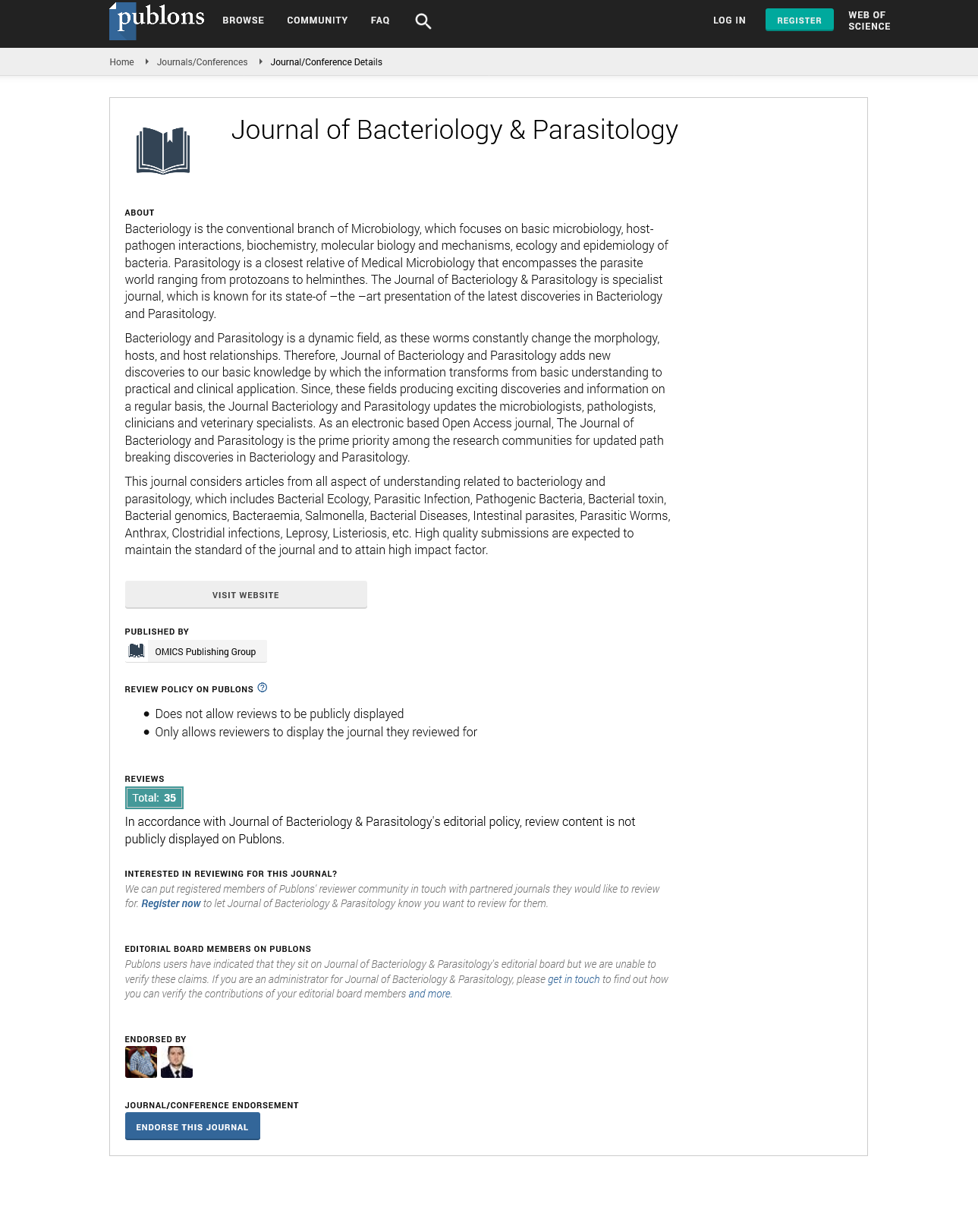Indexed In
- Open J Gate
- Genamics JournalSeek
- Academic Keys
- JournalTOCs
- ResearchBible
- Ulrich's Periodicals Directory
- Access to Global Online Research in Agriculture (AGORA)
- Electronic Journals Library
- RefSeek
- Hamdard University
- EBSCO A-Z
- OCLC- WorldCat
- SWB online catalog
- Virtual Library of Biology (vifabio)
- Publons
- MIAR
- Geneva Foundation for Medical Education and Research
- Euro Pub
- Google Scholar
Useful Links
Share This Page
Journal Flyer

Open Access Journals
- Agri and Aquaculture
- Biochemistry
- Bioinformatics & Systems Biology
- Business & Management
- Chemistry
- Clinical Sciences
- Engineering
- Food & Nutrition
- General Science
- Genetics & Molecular Biology
- Immunology & Microbiology
- Medical Sciences
- Neuroscience & Psychology
- Nursing & Health Care
- Pharmaceutical Sciences
Commentary - (2025) Volume 16, Issue 2
Helminth Infections in Rural Communities: Burden, Diagnosis, Treatment
Aisha Karim*Received: 24-Mar-2025, Manuscript No. JBP-25-29941; Editor assigned: 26-May-2025, Pre QC No. JBP-25-29941; Reviewed: 09-Apr-2025, QC No. JBP-25-29941; Revised: 16-Apr-2025, Manuscript No. JBP-25-29941; Published: 23-Apr-2025, DOI: 10.35248/2155-9597.25.16.535
Description
In many rural areas, infections caused by helminth worms impose heavy health burden. These organisms include soiltransmitted worms such as Ascaris lumbricoides, Trichuris trichiura, hookworms; tissue dwelling worms like Schistosoma species; and filarial worms causing lymphatic filariasis or onchocerciasis. Individuals suffer anemia, malnutrition, growth retardation, organ damage, and sometimes death when loads are high.
Transmission often happens when eggs or larvae present in soil, water or on vegetation enter human bodies. For instance, hookworm larvae penetrate skin; schistosome larvae enter via contact with infested water; filarial worms are transmitted by insects that feed on human blood. Environmental contamination through inadequate disposal of human feces ensures steady supply of infective stages.
Ascaris may cause intestinal obstruction when heavy. Trichuris causes dysentery like symptoms. Hookworms suck blood, inducing iron deficiency anemia. Schistosomiasis leads to bladder or intestinal disease, liver fibrosis, hematuria or portal hypertension. Filarial infections result in lymphedema, elephantiasis or skin changes. Many infections remain mild in early stages but accumulate harm over years.
Diagnosis depends on detecting eggs or larvae. Stool examination is common Kato Katz technique counts eggs per gram to quantify worm burden. Urine filtration helps in urinary schistosomiasis. Blood smears or skin snips might show microfilariae. Serology or antigen detection improves sensitivity in low burden settings. Imaging may reveal organ damage such as hepatic enlargement or fibrosis. Field diagnostics must be low cost, simple, but accurate enough to guide treatment.
Treatment relies on anthelminthic drugs: albendazole, mebendazole for many soilâ?transmitted helminths; praziquantel for schistosomiasis; ivermectin in combination for filariasis and onchocerciasis. Mass drug administration campaigns distribute these to at risk populations. Dosing must be correct, adherence high, and reinfection risk considered. Side effects moderate; repeated treatment often needed since single round rarely clears all worms and environmental exposures persist.
Control efforts include improving sanitation, safe water supply, proper waste disposal. Wearing shoes reduces hookworm skin penetration. Education about hygiene washing hands, avoiding contact with contaminated water limits exposure. Environmental modification such as draining standing water, building latrines, preventing open defecation all reduce life cycles of helminths.
Surveillance tracks prevalence, species distribution, treatment efficacy. In some areas, repeated mass treatment has lowered worm burden substantially. But in others, reemergence occurs when control programs lapse or environmental factors favour worm survival. Resistance to anthelminthic medications is emerging in some animalâ?worm systems; human helminth resistance remains less documented but vigilance is necessary. Research continues into vaccine development: for Schistosoma, efforts try to target larval or adult worm antigens; for filarial worms, antigens that reduce transmission or worm survival are under test.
Conclusion
Ultimately, reducing helminth disease in rural communities requires integrated strategy combining treatment programs, infrastructure improvements, education, environmental sanitation and policy support. With support from governments, NGOs, local leaders, and community participation, heavy burdens of worm infections can decline significantly, improving nutrition, school performance, and reducing morbidity and mortality. Novel drug compounds and formulations exploring longer halfâ?life, fewer sideâ?effects, or combination therapy may reduce the number of treatments needed. Diagnostic assays that differentiate species accurately, detect low intensity infections, and work in field without lab equipment are high priority.
Citation: Karim A (2025). Helminth Infections in Rural Communities: Burden, Diagnosis, Treatment. J Bacteriol Parasitol. 16:535.
Copyright: © 2025 Karim A. This is an open-access article distributed under the terms of the Creative Commons Attribution License, which permits unrestricted use, distribution and reproduction in any medium, provided the original author and source are credited.

